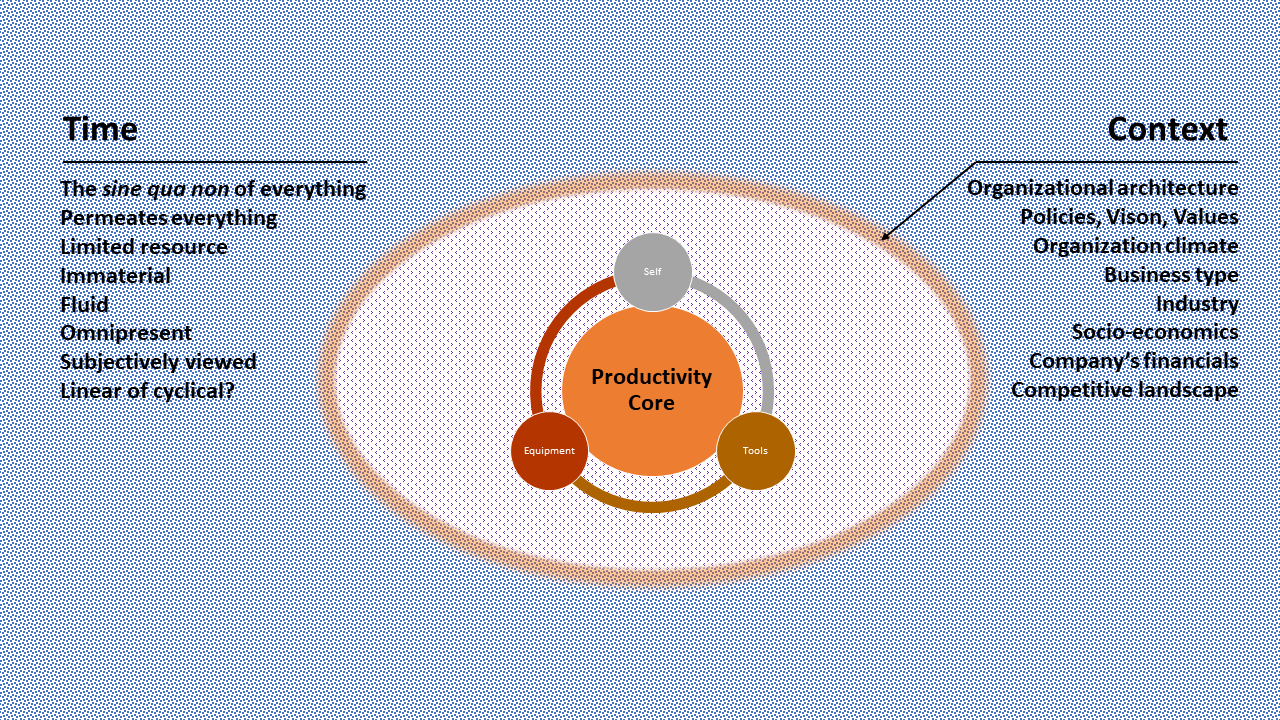Decades of scientific research show that stress and anxiety are prevalent problems at work, contributing to deficits in employee morale, well-being, and productivity. We work longer hours in what appears to be a boundaryless time schedule, repeatedly overcommitting and regretfully underdelivering.
It seems that the norm in our modern society, is to be running errand and whining we are so busy—or bragging about it in some cases. Busyness appears to be a pandemic, occurring over a wide geographic area and affecting an exceptionally high proportion of the population.
What is worst, we seem to sacrifice our health, our relationships with our loved ones, and giving up on our dreams. I want you to keep in mind that frantic busyness and chaotic multitasking are not glamorous, and productivity is not about being the hardest worker in your ecosystems. As Stephen R. Covey would say, “busyness is an excuse that we use to avoid doing the first things in our lives.”
Since in today’s organizations, knowledge-worker are more autonomous, with enhanced socio-emotional skills, with sharp critical-thinking skills, hyperconnected, and with acute social and cultural expectations, their roles and responsibilities are more fluid.
These individuals coalesce and collaborate in organic teams in their business ecosystems, where most of the value is created.
In a nutshell, teams are the quintessential social setting for collaboration, value creation, learning, and development.
But what I mean with the expression ‘business ecosystem’? In my recently published book “The Productivity Ecosystem”, I define business ecosystem as a) the network of organizations—including suppliers, distributors, customers, competitors, government agencies, and so on—involved in the delivery of a specific product or service through both competition and cooperation; and b) a governance model that competes with other ways of organizing the creation of a product or service, such as a vertically integrated organization, a hierarchical supply chain, or an open-market model.
Central to this twofold definition, is that each entity in the ecosystem affects and is affected by the others, creating a constantly evolving relationship in which each entity must be flexible and adaptable in order to survive, as in a biological ecosystem. A dynamic system in its essence, where nothing is or should be static.
That’s why a system-thinking approach is needed to fully understand the nuances of what is contained in my Productivity Ecosystem paradigm. As such, it is a fluid, organized setup of elements that all work hand in hand to achieve a general purpose. It comprises parts that make it complete.
Systems thinking in practice encourages us to explore inter-relationships (context and connections), perspectives (each actor has their own unique perception of the situation) and boundaries (agreeing on scope, scale and what might constitute an improvement). In general, a systems thinking includes the willingness to see a situation more fully, to recognize that we are interrelated, to acknowledge that there are often multiple interventions to a situation, and to champion out-of-the-box, innovative interventions.
In my paradigm, three systems are inextricably and dynamically interlinked to form what we call The Productivity Ecosystem: the Core, the Context, and the dimension of Time.
Core – We have found that productivity always is a dynamic combination of three elements: Self, Tools (techniques), and Equipment. This is what we call the Productivity Core.
Context – These intimately interlinked elements are always surrounded by environmental forces, such as, overall socio-economic forces; type of business and industry; organizational culture, climate, and structure; office politics, and the like. This what we call the Productivity Context; also, very dynamic.
Time – Is the one thing that permeates everything and is omnipresent. Time, hence, is the meta-system involving all other systems—there is no other system above and beyond it. Yet, for the sake of productivity, time is a limited resource. What you do in it is what makes the difference. As revolutionary as it seems, I firmly believe that we don’t manage time. Instead, in the quest for productivity gains, what we need to do is to manage all our tasks systematically and efficiently. Eliminating wasteful activities, organizing the most value-adding activities, and communicating assertively.
Is in an ecosystem of teams is where ideation, innovation, collaboration, decision-making, learning, and most of the value is created. What seems indispensable for boosting productivity then, is to equip these teams with the power to execute and implement their solutions with agility and assertiveness.
Increased empowerment is a must; redefined accountability is a prerequisite. It has profound consequences in terms of leadership, decision-making, teamwork, and communication, to mention just a few.

